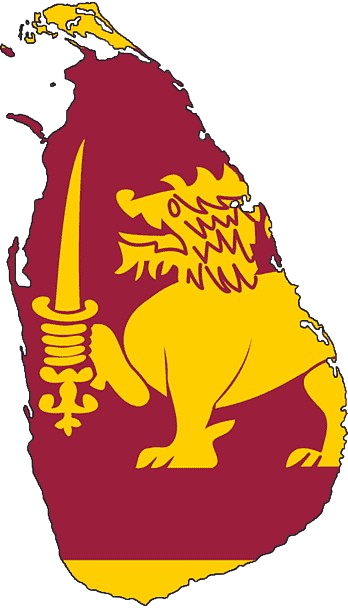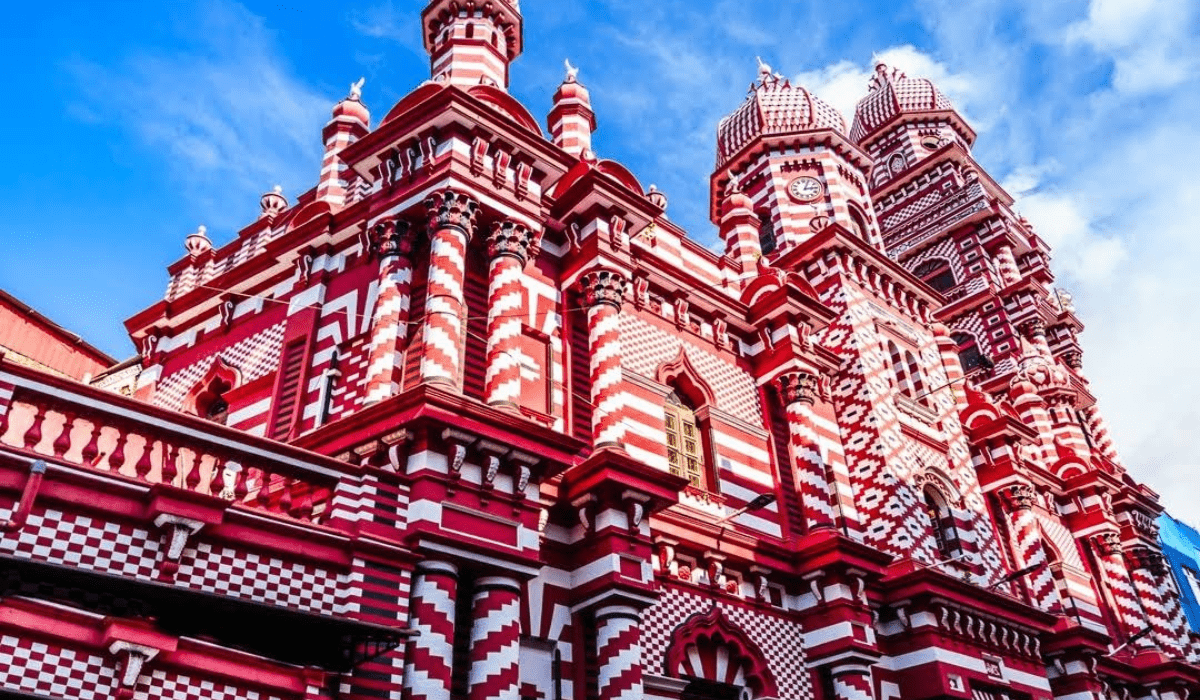Sri Lanka’s vibrant capital, Colombo, is a melting pot of cultures and religions. Among its architectural marvels stands the Red Mosque, also known as the Jami Ul-Alfar Mosque, a stunning landmark renowned for its intricate design and historical significance. This captivating mosque offers a glimpse into Sri Lanka’s rich Muslim heritage and serves as a must-visit for travelers seeking cultural immersion and architectural appreciation.
Table of Contents
A Beacon of Islamic Architecture
Built in 1908, the Red Mosque stands out with its unique facade adorned with red and white stripes. This distinctive pattern, inspired by Indian and Moorish architectural styles, creates a mesmerizing visual effect. The mosque’s towering minarets pierce the Colombo skyline, while the intricate details on the arches and doorways showcase the craftsmanship of its builders.
A Brief History of the Red Mosque
The Red Mosque was built in 1908 by Habibu Lebbe Saibo Lebbe, a renowned architect who drew inspiration from Indo-Saracenic and Neo-Classical styles. The mosque was commissioned by the Indian Muslim community, who were based in Pettah and needed a place of worship. Initially designed to accommodate 1,500 worshippers, its capacity was later expanded to 10,000 in 1975.
A Journey Through Islamic Heritage
Stepping inside the Red Mosque, you’ll be greeted by a serene atmosphere. The spacious prayer hall features a beautifully decorated mihrab (niche indicating the direction of Mecca) and a grand chandelier. Sunlight filters through stained glass windows, casting colorful patterns on the floor, adding to the mosque’s tranquil ambiance.
Beyond Religious Significance
The Red Mosque is not just a place of worship; it’s also a vibrant community center. Witness the mosque come alive during prayer times, with the melodic sounds of the Quran filling the air. You can also observe the daily life of the local Muslim community, fostering a deeper understanding of Sri Lankan culture and traditions.
The Significance of the Red Mosque
The Red Mosque is not only a place of worship but also a symbol of the rich cultural heritage of Sri Lanka. The mosque has been a landmark for sailors approaching the port of Colombo ever since it was built, and it continues to be an important part of the city’s cultural landscape. The mosque also serves as a beacon of social welfare, providing refuge and aid to those in need during times of adversity.
Planning Your Visit
The Red Mosque is open to visitors of all faiths, offering a chance to experience Islamic architecture and culture firsthand. Here are some tips for planning your visit:
- Dress Modestly: As a place of worship, respectful attire is recommended. Cover your shoulders and knees.
- Observe Prayer Times: If you wish to witness the mosque in full activity, plan your visit outside of prayer times.
- Seek Permission: While the mosque is generally open to visitors, it’s advisable to ask permission from the caretaker before entering the prayer hall.
Unveiling Colombo’s Cultural Tapestry
Visiting the Red Mosque is an enriching experience that goes beyond admiring its architectural beauty. It’s a chance to delve into Sri Lanka’s diverse cultural tapestry and gain a deeper appreciation for the island nation’s rich Islamic heritage. So, add the Red Mosque to your Colombo itinerary and embark on a journey of cultural discovery.
Must-See Architectural Features of the Red Mosque
- Pomegranate-Shaped Domes: The mosque features domes shaped like pomegranates, a unique departure from the traditional onion-shaped domes found in many mosques.
- Red and White Candy-Striped Patterns:The mosque’s walls are adorned with red and white candy-striped patterns, creating a striking visual effect reminiscent of the inside of a pomegranate.
- Intricately Carved Dome: The dome is intricately carved with designs that give it the appearance of the inside of a pomegranate.
- Mihrab and Minbar:
- The mosque’s interior includes a mihrab, a niche that indicates the direction to Mecca, and a minbar, a pulpit where the prayer leader stands.
- Clock Tower:The mosque features a commanding clock tower that adds to its architectural grandeur.
- Unique Color Scheme:The mosque’s red and white color scheme is a distinctive feature that sets it apart from other mosques.
- Architectural Style:The mosque’s design combines elements of Indo-Saracenic, Gothic Revival, and Neo-Classical styles, making it a unique blend of architectural influences.These architectural features make the Red Mosque a remarkable and awe-inspiring structure that is worth visiting for its unique blend of style and functionality.
These architectural features make the Red Mosque a remarkable and awe-inspiring structure that is worth visiting for its unique blend of style and functionality.
Conclusion
The Red Mosque in Colombo, Sri Lanka, is an architectural marvel that is not to be missed. With its unique red and white candy-striped patterns, the mosque is a testament to the rich cultural heritage of Sri Lanka. Whether you are interested in architecture, history, or culture, the Red Mosque is a must-visit destination that will leave you in awe.




